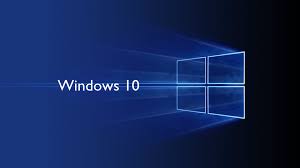Windows 10 is designed to facilitate both leisure and work pursuits. In this section of lesson, I demonstrate some of the more useful productivity features to facilitate getting your work done, be it for study, home admin or for a business.
The following Windows 10 productivity features are relevant:
- Windows Task View – Win + Tab Key
- Virtual Desktops
- Managing multiple running Programs/Apps inc Hiding/Restoring all Windows, Snapping, Pinning to Taskbar, Jump Lists
- Onedrive – Saving, Syncing and Sharing Files
- Taking Screenshots to include when reporting a program error, recording screen from online course or for including in a report
Saving, syncing and sharing files in Onedrive
Onedrive is a service which stores your files in the cloud, or in other words, on a server on the internet. It can be handy for backup of your important files and also for accessing your files on other computers or mobile devices.
Onedrive is integrated into Windows 10 so that there is a seamless use of the service, once it is up and running. So, as files are added or updated in Onedrive locally on your PC, those files are then synchronised with your Onedrive account in the cloud. Also, if you have another PC or mobile device running Windows 10, then these updated files are synchronised with it shortly after being changed on your main PC.
To learn how to use the main features of Onedrive, check out this tutorial…
http://www.gcflearnfree.org/onedrive
Sharing of files and folders can only be done from the Onedrive website, check out this tutorial for further details…
http://www.digitalcitizen.life/how-share-files-and-folders-using-onedrive-website
Task Scheduler
Windows’ built in Task Scheduler can enable you to run regularly occurring tasks on a schedule (as the name implies). You can create both simple and complex tasks, ranging from starting a program and sending an email to running complex scripts under specific conditions, all with just a few clicks.
See more at:
https://www.howtogeek.com/123393/how-to-automatically-run-programs-and-set-reminders-with-the-windows-task-scheduler/
http://lifehacker.com/5932456/7-awesome-features-youve-forgotten-about-in-windows-7
Taking Screenshots
Windows 10 has built-in print screen option that works great for basic tasks, but many third-party programs offer more ease of use and features.
Take Quick Screenshots with Print Screen (PrtScn)
The Print Screen button on your keyboard can take a screenshot and save it as a file, take a screenshot of only one window (instead of the whole screen) or take a screenshot and save it as an image file.
To Take a regular Screenshot
Press “PrtScn” button, a screenshot of your currently active window will be copied to the clipboard. You can now paste it into your favourite image editor or document editor.
To take a screenshot of only one window, click on the title bar of the window that you want to capture. Press “Alt + PrtScn”, and a screenshot of your currently active window will be copied to the clipboard.
To Save Your Screenshot as an Image File
Press the “Windows logo key + PrtScn.” The screen will dim for a moment, and then you will see the screenshot appear as a file in a folder entitled “Screenshots”, inside your default “Pictures” folder. The screenshot is automatically labelled with a number, e.g Screenshot (1).png.
See more at:
http://www.howtogeek.com/226280/how-to-take-screenshots-in-windows-10/
Activities – Productivity tips
Activity 2a Virtual desktops
Set-up two work sessions using Virtual Desktops and carry out sample tasks e.g producing your home budget and checking bank balance in session 1, while browsing recent photos with Xnview desktop app in session 2.
Activity 2b – Share Photos with Onedrive
Import a selection of photos from your digital camera into My Pictures folder. Once that’s done, you should then copy the folder into Onedrive and share the link by email with a friend or family member.
